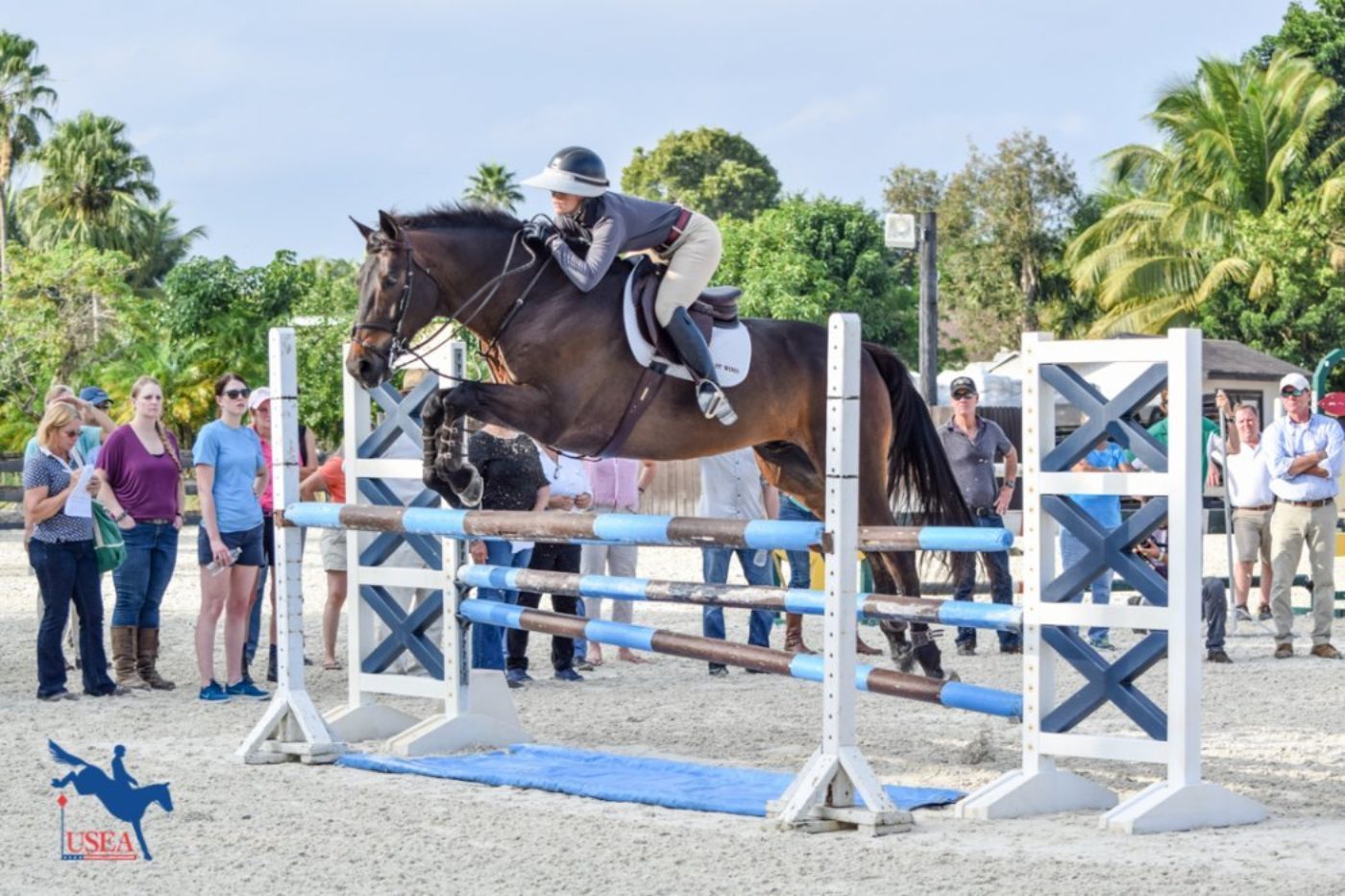Renew Your USEA Membership for the 2023 Season Today LEARN MORE

The earliest participants of the 2016 USEA Annual Meeting and Convention joined esteemed show jumping course designer Richard Jeffery on Wednesday for a comprehensive clinic on course design. The group gathered at the Diplomat Resort & Spa in Fort Lauderdale, Fla., for a classroom session before heading out to Tiffany Morrissey’s East Wind Farm to get hands on experience.
The clinic was attended by course designers, licensed officials and competitors all looking to improve their course design technique. Jeffery, who designs many pure show jumping competitions, opened the day by explaining the job of eventing show jumping course designers: to design an “ordinary show jumping competition.” This is outlined in [i]USEF Rules for Eventing[/i] EV143, 2, whereby the show jumping phase of the competition is aimed to show that the horse and rider pair are sufficiently trained for the discipline.
[i]EV143, 2: “This test is similar to an ordinary show jumping competition, but without any attempt to find a ‘winner’ of this test on its own. Its main objective is to prove that the horse and rider are well trained in the specialist discipline of show jumping”[/i]
Jeffery returned back to this idea frequently throughout the seminar, reminding participants that eventing show jumping does not require ‘tricky’ courses or obstacles often seen in jump-offs and speed courses of pure show jumping.
The first step to designing any show jumping phase is to outline the track. Pen and pencil handy, Jeffery says designers should dictate the flow and direction of their track before even considering the jumps themselves. “Show jumping is a dressage course with jumps in it,” he explained.
Once the track is traced out, then designers can begin to map out jump locations. With a competition consisting of different levels, Jeffery was adamant that course design should change to reflect the level of difficulty. “We must not build one course and make it higher and higher. Muscle up the higher levels. It must get more difficult up the levels. It’s just like in the dressage, we don’t just take out a few movements in the Advanced test for Novice, it’s the same in the show jumping.”
When laying out the show jumping course, he encourages course designers to consider what alternate courses could be used. Designers should start with the highest level of competition and down to the lower levels. Above is an example of using the same space and fences for a three different levels.
Jeffery shared these tidbits to keep in mind when crafting a course:
Jeffery was joined throughout the clinic by well-known designers Marc Donovan and Chris Barnard. He explained to participants that those two design more than 50 percent of the courses for international divisions across the country, demonstrating the need for new designers. As USEF Show Jumping Course Advisor, Jeffery shared a wealth of knowledge with the group, encouraging questions and lively discussion.
The USEA would like to extend a huge thank you to Tiffany Morrissey for inviting us to her beautiful East Wind Farm for this clinic, and sharing her talented demo rider and horses with our group.
About the USEA Annual Meeting and Convention
The USEA Annual Meeting and Convention takes place each December and brings together a large group of dedicated USEA members and supporters to discuss, learn, and enjoy being surrounded by eventing enthusiasts. The 2016 Annual Meeting and Convention is taking place at the Diplomat Resort & Spa Hollywood in Fort Lauderdale, Fl. December 7-11, 2016.